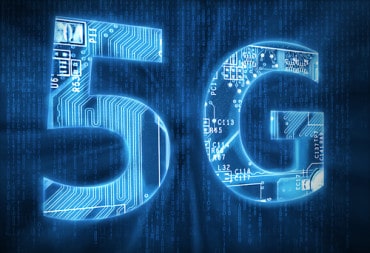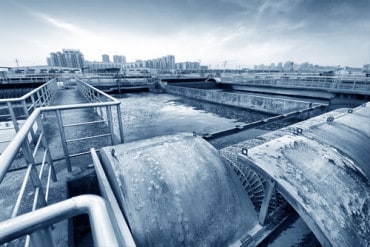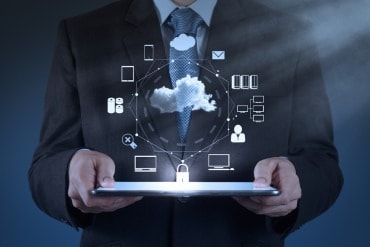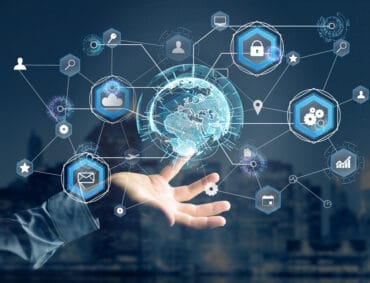
With more than 73.1 zettabytes (ZB) expected to be generated by IoT devices by 2025, it’s no wonder that companies are struggling to make sense of it all. The question then becomes not how much data a company can collect but rather how it can use it to make valuable business decisions.
Businesses across all industries are restructuring their systems and processes as technology empowers leaders to embrace completely new ways of working. The IoT is central to this digital transformation. According to IoT Analytics, although the growth in the number of connected devices slowed in 2021, shipments are expected to accelerate again over 2022 and 2023, with the total number of IoT devices projected to reach 14.4 billion by the end of 2022.
However, many early adopters of IoT have learned the hard way that sensors do not generate value unless they are part of a holistic restructuring effort focused on leveraging the data collected to generate real-time actions, improve insight and increase productivity.
One of the IoT’s many strengths is its ability to measure very specific and often previously unquantifiable data, but its business case rests on its usefulness in driving improved outcomes.
Further, the IoT is evolving from single point solutions to more comprehensive systems delivering specific sets of actionable data. This shift is enabling automation in businesses, powering productivity gains and increasing operational effectiveness.
See also: Where Does IoT Exist in the World? Expect the Unexpected.
Here are five examples of how IoT sensors are changing outcomes:
Smart Buildings
IoT sensors support a wide array of applications in buildings, particularly for businesses that provide hard or soft facilities management services.
Flexible working is here to stay and is driving demand for real-time data on who is coming into a building, where they are working, and what rooms they use to allocate services efficiently and conserve energy.
For example, movement and temperature sensors can monitor desk occupancy and room use for collaborative areas such as meeting rooms. This data can be leveraged to drive dynamic scheduling for facilities management teams, giving them real-time information on which areas need cleaning and restocking first. Over time, the data can be used to identify trends and spot patterns in room usage.
Counting door openings or how many people are sitting in a given room does not provide much value on its own. However, when you track it over time, you empower managers, teams, and edge workers to make more informed decisions.
Sensors can also help to monitor a building’s energy consumption and run HVAC systems more efficiently while still maintaining the target temperature.
Rather than enabling a “Big Brother” future, smart buildings provide increased productivity and empower everyone with better information.
See also: Smart Spaces: The Benefits of Energy Harvesting IoT Sensors
Smart Bathrooms
Whether it’s a bustling airport or a coffee shop, the condition of the bathrooms in any business leaves an enduring impression, for better or worse, making them critical to the customer or user experience. It’s widely recognized that input-led cleaning routines and working to fixed schedules are a crude and ineffective way of working, but without sensors, it is impossible to move to a productive, output-led model.
Sensors monitor door openings, and in heavily used washrooms, it can be viable to use sensors to monitor the stock of consumables – soap, toilet paper, and whether the trash needs to be emptied.
This data can be amplified through real-time, dynamic dashboards, as well as feeding into any workflow management applications to direct cleaners to the busiest bathrooms. This substantially improves efficiency. Many businesses have been able to reduce expenses associated with cleaning by as much as two-thirds.
Crucially, this does not come at the cost of quality – in fact, it enables cleaning teams to maintain washrooms to a far higher standard for the best possible experience.
Intelligent Assets
Asset management has traditionally been led by a mixture of reactive maintenance and planned predictive maintenance, with manual reporting and extensive paperwork surrounding both processes.
Again, the IoT facilitates better outcomes. For example, sensors can measure the power draw of an asset such as an air conditioning unit and automatically push out a notification to the maintenance team if there is a surge in the power draw that typically suggests a fault.
The feedback loop from sensor alert to response can be completed using a workflow management platform, first generating the action and then confirming the issue has been addressed.
This materially reduces response times, completely eliminating the manual process of requesting, chasing, and confirming calling out the maintenance team.
Smart Transport Hubs
Whether it’s an airport, a train station, or a large multi-modal transport hub, real-time dynamic data delivered by the IoT transforms the chaos of information, incidents, and actions occurring over a typical day into informed decisions and increased productivity.
Lighting and ventilation assets critical to passenger and worker safety and health can be monitored using sensors, automating callouts to maintenance.
Air quality is also a chief concern in any transport hub. The amount of CO2 and other particulates in the air can be measured with sensors, with value realized from being able to display this data as a map of the site. Alerts will show for individual rooms when needed, indicating where problem areas are and facilitating manual intervention.
All use cases mentioned so far demonstrate opportunities for leveraging data into a plan for action; however, integration of these different data streams is key. Transport hubs are exemplary because they are complex, with thousands of diverse processes and factors that need to be considered.
For example, being able to compare air quality data with data on crowding (collected by sensors or smart cameras) could show a correlation, strengthening the argument for effective crowd management. Being able to support observations and experience with real-time, dynamic data empowers transportation managers to allocate resources based on sound information.
Customer Experience
IoT isn’t purely useful in improving operational efficiencies. In fact, it can be used to measure and act on previously unmeasurable factors that influence customer loyalty and purchase decisions.
Experiential elements of the customer experience, such as lighting, noise, and temperature, can significantly impact the amount of time spent shopping and the likeliness of a customer returning, but until now, it hasn’t been practical to monitor this across multiple sites in real time.
Presenting this data on a dynamic dashboard for leaders across an enterprise empowers and informs proactive optimization of conditions, arming teams with the information they need to make impactful decisions.
Making Data Count
An uncomfortable truth about IoT implementations is there are far more businesses that mishandle their IoT implementations than not. With more than 73.1 zettabytes (ZB) expected to be generated by IoT devices by 2025, it’s no wonder that companies are struggling to make sense of it all. The question then becomes not how much data a company can collect but rather how it can use it to make valuable business decisions.
The IoT’s value is indisputable, and the range of applications, along with opportunities for cost savings, efficiency, productivity, and customer service, continue to grow. Businesses with a complete plan supported by platforms that onboard, illuminate, and action the new data collected will differentiate faster than those that do not. Software with supporting services infrastructure facilitates action and insight and is key to unlocking the potential of IoT.






























